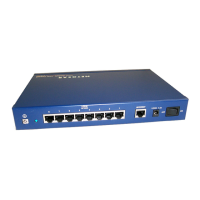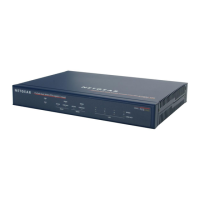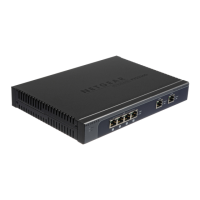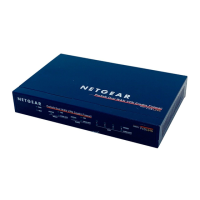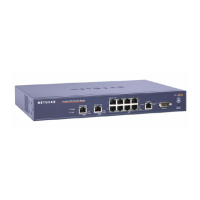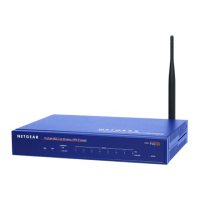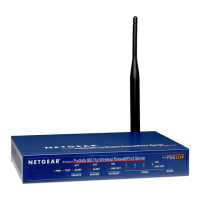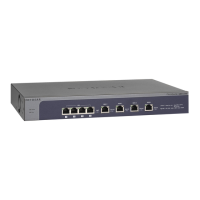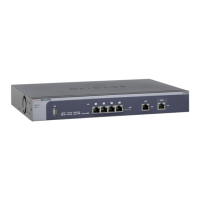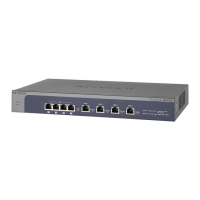Wireless Configuration and Security
105
ProSafe Wireless-N 8-Port Gigabit VPN Firewall FVS318N
4. Click Apply to save your settings.
Test Basic Wireless Connectivity
After you have configured the wireless VPN firewall as explained in the previous sections,
test your wireless clients for wireless connectivity before you place the wireless VPN firewall
at its permanent position.
To test for wireless connectivity:
1. Con
figure the 802.11b/g/n wireless clients so that they all have the same SSID that you
have configured on the wireless VPN firewall. Make sure that the wireless mode on the
wireless VPN firewall supports the wireless capacity of the wireless clients. (For
example, 802.11b-compliant devices cannot connect to the wireless VPN firewall if the
wireless mode is set to ng.)
RTS Threshold Enter the Request to Send (RTS) threshold. The default setting is 2346 bytes.
If the packet size is equal to or less than the R
TS threshold, the wireless VPN
firewall uses the Carrier Sense Multiple Access with Collision Detection
(CSMA/CD) mechanism, and the data frame is transmitted immediately after
the silence period.
If the packet size is larger than the RTS threshold, the wireless VPN firewall
use
s the CSMA with Collision Avoidance (CSMA/CA) mechanism. In this
situation, the transmitting station sends an RTS packet to the receiving station
and waits for the receiving station to return a Clear to Send (CTS) packet before
sending the actual packet data. This method improves the performance but
reduces the throughput.
Fragmentation Threshold Enter the maximum packet size that is used for the fragmentation of data
p
ackets. Packets that are larger than the specified fragmentation length are
broken up into smaller packets before being transmitted. The fragmentation
threshold needs to be an even number. The default setting is 2346 bytes.
Preamble Mode Specify the preamble mode by making a sel
ection from the drop-down list:
• Lo
ng. A long transmit preamble might provide a more reliable connection or
a slightly longer range. This is the default mode.
• Short. A
short transmit preamble gives better performance.
Protection Mode Specify the Clear to Send (CTS)-to-self protection mode by making a selection
from the drop-down list:
• Lo
wer. CTS-to-self protection mode is disabled. This is the default mode.
• Uppe
r. CTS-to-self protection mode is enabled. This mode increases the
performance but reduces the throughput slightly.
Power Save Enable To enable the Wi-Fi Multimedia (WMM) Powersave feature, select the Power
Save Enable check box. This feature saves power for battery-powered
equipment by increasing the efficiency and flexibility of data transmission. Clear
the check box to disable the feature, which is the default setting.
Table 25. Advanced Wireless screen settings (continued)
Setting Description
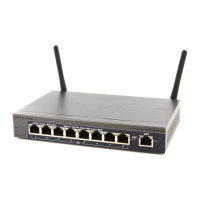
